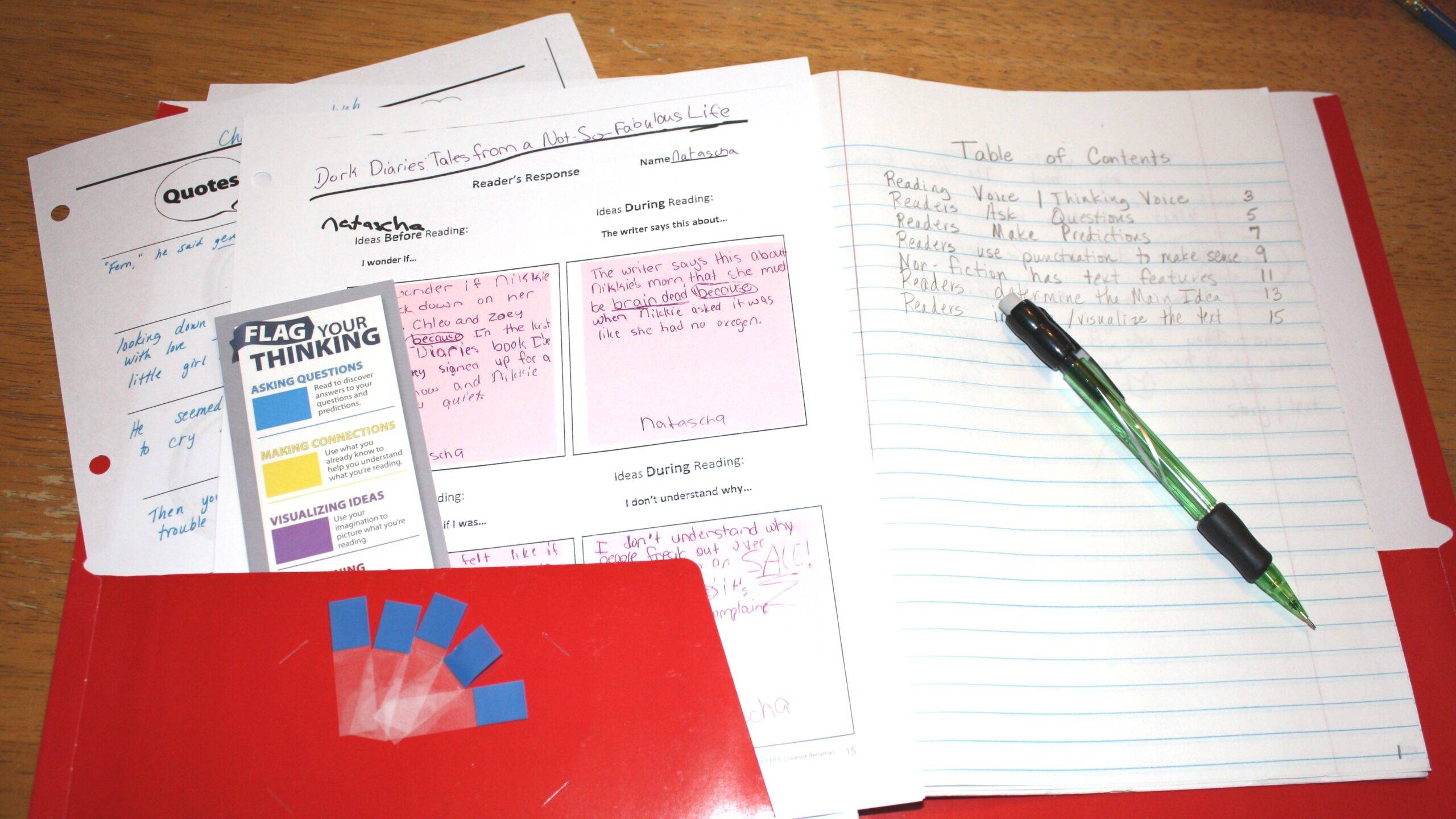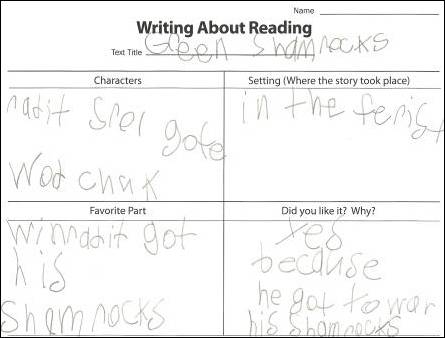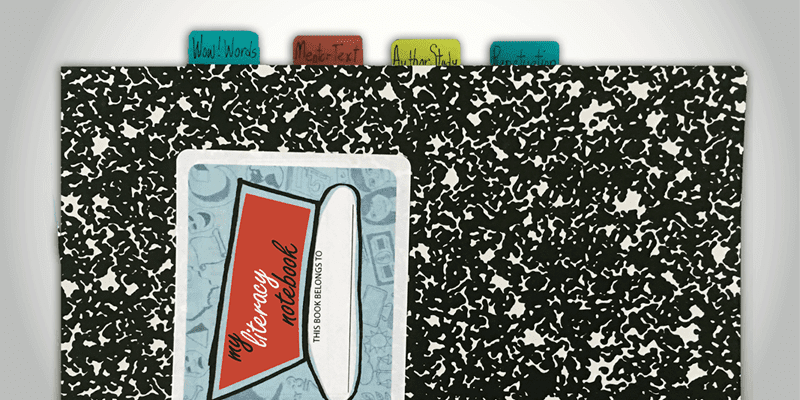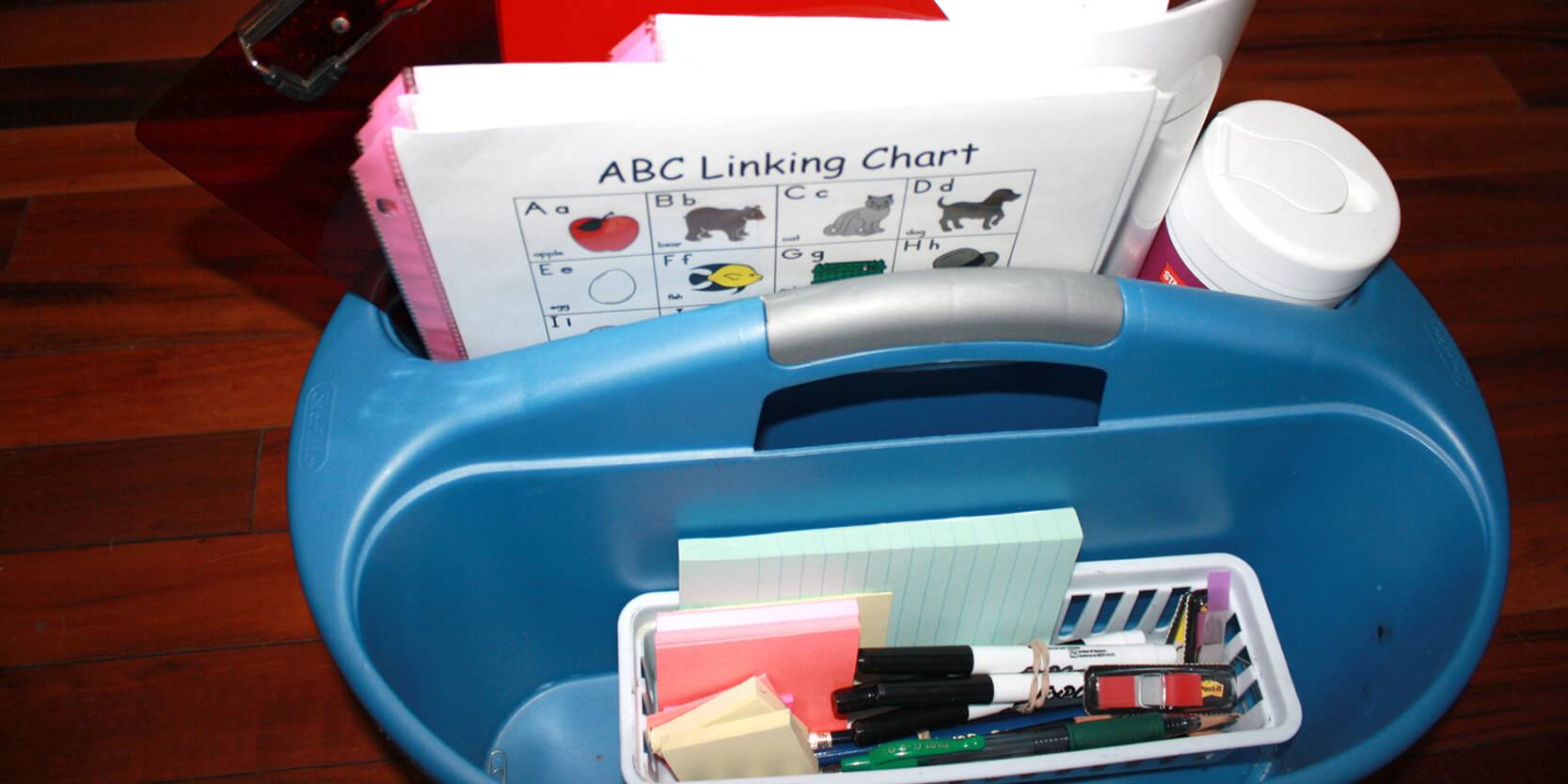Learning Center
reading
Keep track of thinking and papers with a reader’s notebook
February 13, 2013

Writing about the reading is encouraged during the 90-minute reading block. However, this writing should not be book reports or long essays but rather short, quick ways to document during-reading thoughts or to reveal after-reading understanding. For example, here is a universal graphic organizer that can be used after reading any story or some informational text. (See student sample on Shamrocks.)
All of these “thoughts” generated on sticky notes, graphic organizers, and lined paper can pile up quickly. Consequently, your students need a Reader’s Notebook or Reading Response Journal to keep organized. Here are two suggested organizational systems:
1. Try a bound spiral or composition notebook.
Students can write on the lined paper or glue graphic organizers to the pages.
- First-grade teacher Hilary Lochner has her Riverview Elementary (Marion, IN) students glue graphic organizers into their notebooks. (This is especially helpful for primary students who can’t recreate organizers on their own.)
- Sixth grade teacher Gretchen Nelson has her English Elementary (English, IN) students bring their “Interactive Reader’s Notebooks” to each whole-class mini-lesson. They use the right page to record notes about the lesson skill or recreate the anchor chart that Gretchen made. The left page is where they demonstrate the same skill applied during independent reading, including extended reading responses. TIP: Gretchen has her students number each page and reserve the first few pages of the notebook to build the table of contents. This makes it easy to reference previously taught skills and have students locate their notes quickly.
2. Use a pocket folder with brads.
This format allows for a little more flexibility. Use the center brads to hold a handful of loose-leaf paper.
This can be used to record notes from the mini-lesson and/or jot Thinking-Voice thoughts during the reading block. But rather than taking the time to hole punch and add the graphic organizers to the brads, those additional pages can simply go into the pockets. One pocket can house reader tools such as sticky flags, sticky notes, bookmarks, etc.
The second pocket can be designated for all the loose handouts and universal graphic organizers that students receive and complete during literacy stations. Students simply take the folder with them from station to station, adding papers as they go. (Once completed, these graphic organizers can be turned in for assessment and grades.)






